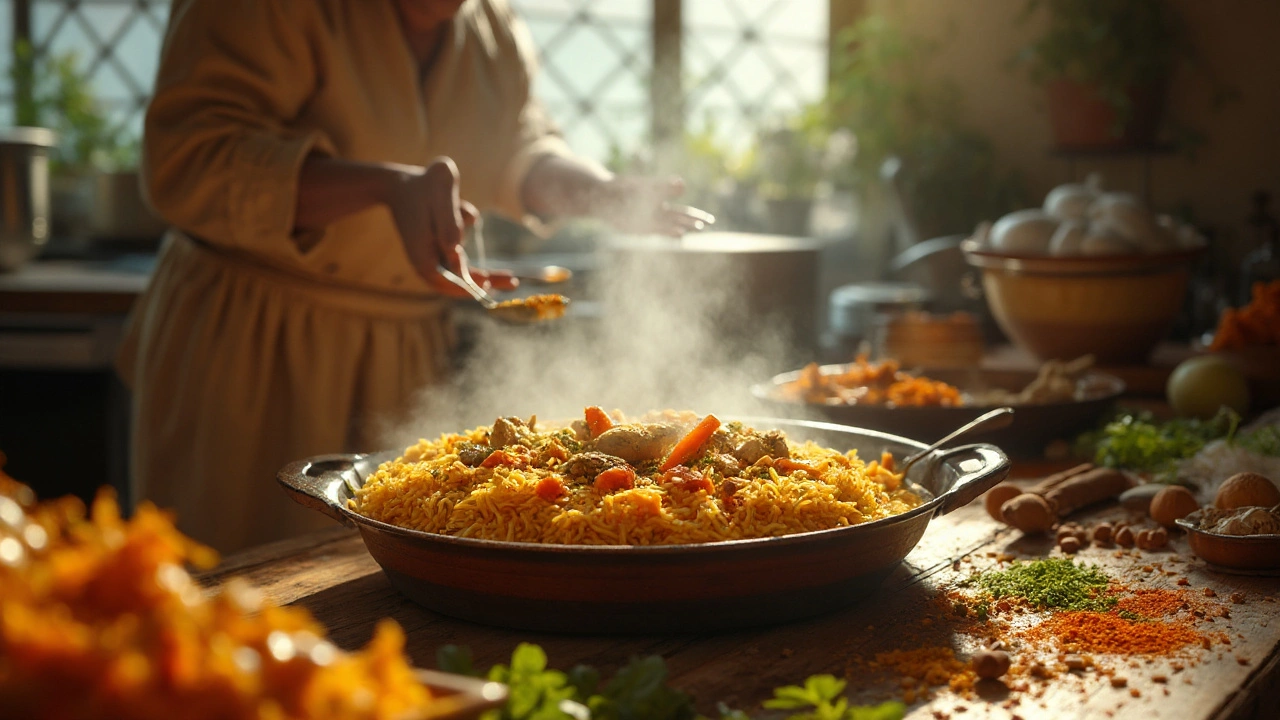Biryani Cooking Tips You Can Use Right Now
If you love biryani but end up with mushy rice or bland spice, you’re not alone. The good news is that a few small changes turn a decent pot into a restaurant‑level dish. Below are the exact steps that work every time.
Soak and Prep the Rice
Start with good basmati rice. Rinse it under cold water until the water runs clear – this removes extra starch and stops the grains from sticking together. Then soak the rice for 30 minutes. The soak lets the grains absorb water, so they stay long and separate when cooked.
While the rice rests, slice onions, chop tomatoes, and measure out your whole spices. Having everything ready means you won’t scramble mid‑cook and risk burning the bottom layer.
Layer and Cook Like a Pro
Heat oil or ghee in a heavy pot. Add whole spices – bay leaf, cinnamon, cloves, black cardamom – and let them sizzle for a few seconds. This releases their aroma and builds the base flavor.
Next, fry onions until they turn golden brown. Add ginger‑garlic paste, tomatoes, and ground spices (turmeric, red chili, biryani masala). Cook until the oil separates – that’s the sign the spices are cooked through.
Now it’s time for the rice. Drain the soaked rice and spread it over the meat or veg mixture. Sprinkle a pinch of saffron‑infused milk, a few drops of rose water, and a handful of fried onions on top. Cover the pot tightly with a lid or dough seal to trap steam.
Cook on low heat for 20‑25 minutes. The gentle steam finishes the rice while the flavors meld. Resist the urge to open the lid – each time you do, you lose heat and risk uneven cooking.
When the timer goes off, let the biryani rest for 10 minutes before fluffing. Use a fork to gently lift the rice, mixing the layers without breaking the grains.
Serve hot with raita, salad, or boiled eggs. The result should be fluffy rice, distinct layers, and a burst of spice in every bite.
Quick recap: rinse and soak basmati, fry whole spices, build a robust masala, layer rice, seal the pot, and let it steam on low. Follow these steps and you’ll get consistent biryani every time.
Feel free to experiment with protein – chicken, lamb, shrimp, or just vegetables. The same technique works; just adjust cooking time for your chosen protein.
That’s it. Simple, practical, and ready for you to try tonight. Happy cooking!
Is Biryani Hard to Cook? Simple Tips and Truths for Beginners
Is biryani really hard to cook at home? Discover the truth, the common myths, and get simple tips to make perfect biryani—even if you’re a total beginner.
Why Is Biryani So Hard to Make? Expert Tips for Mastering Authentic Biryani at Home
Uncover why biryani challenges even experienced cooks, from perfecting rice texture to mastering spice layers. Get real tips and facts for authentic results.

